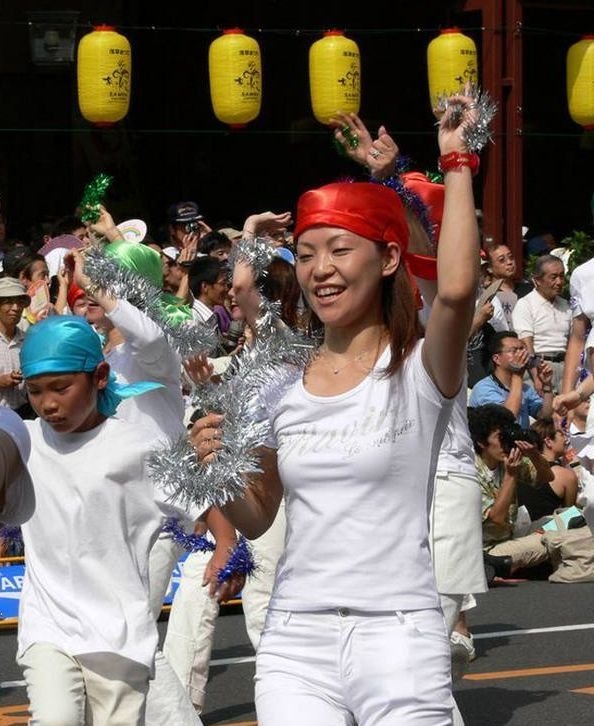|
|
Samba Carnival, Japan
|
In 2007, IPHAN gave the official record, the Book of Registration of Forms of Expression, the matrices of the samba of Rio de Janeiro: samba de terreiro, partido-alto e samba-enredo. Samba is a Brazilian dance and musical genre originating in African and European roots. The word is derived from the Portuguese verb sambar, meaning "to dance to rhythm." It is a worldwide recognized symbol of Brazil and the Carnival and is the national dance of Brazil. Considered one of the most popular Brazilian cultural expressions, the samba has become an icon of Brazilian national identity. The Bahian samba de roda (dance circle), which became a UNESCO Heritage of Humanity in 2005, was a basis of the samba carioca, the samba that is played and danced in Rio de Janeiro.
Although samba exists throughout the country—especially in the states of Bahia, Maranhão, Minas Gerais, and São Paulo—in the form of various popular rhythms and dances that originated from the regional batuque, a type of music and associated dance form from Cape Verde, the samba is a particular musical expression of urban Rio de Janeiro, where it was born and developed between the end of the 19th century and the first decades of the 20th century. It was in Rio that the dance practiced by former slaves who migrated from Bahia in the northeast came into contact and incorporated other genres played in the city (such as the polka, the maxixe, the lundu, and the xote, among others), acquiring a completely unique character and creating the samba carioca urbana (samba school) and carnavalesco (Carnaval school director). In reality, the samba schools are large organizations of up to 5000 people which compete annually in the Carnival with thematic floats, elaborate costumes and original music.
During the 1910s, some songs under the name of samba were recorded, but these recordings did not achieve great popularity; however, in 1917, was recorded in disc "Pelo Telefone" ("By Phone"), which is considered the first samba. The song has the authority claimed by Ernesto dos Santos, best known as Donga, with co-authors attributed to Mauro de Almeida, a known carnaval columnist. Actually, "Pelo Telefone" was creating a collective of musicians who participated in the celebrations of the house Tia Ciata (Ciata aunt), but eventually registed by Donga and the Almeida National Library.
"Pelo Telefone" was the first composition to achieve success with the brand of samba and contribute to the dissemination and popularization of the genre. From that moment, samba started to spread across the country, initially associated with Carnival and then buying a place in the music market. There were many composers as Heitor dos Prazeres, João da Bahia, Pixinguinha and Sinhô, but the sambas of these composers were "amaxixados" (a mix of maxixe), known as sambas-maxixes.
|
|









